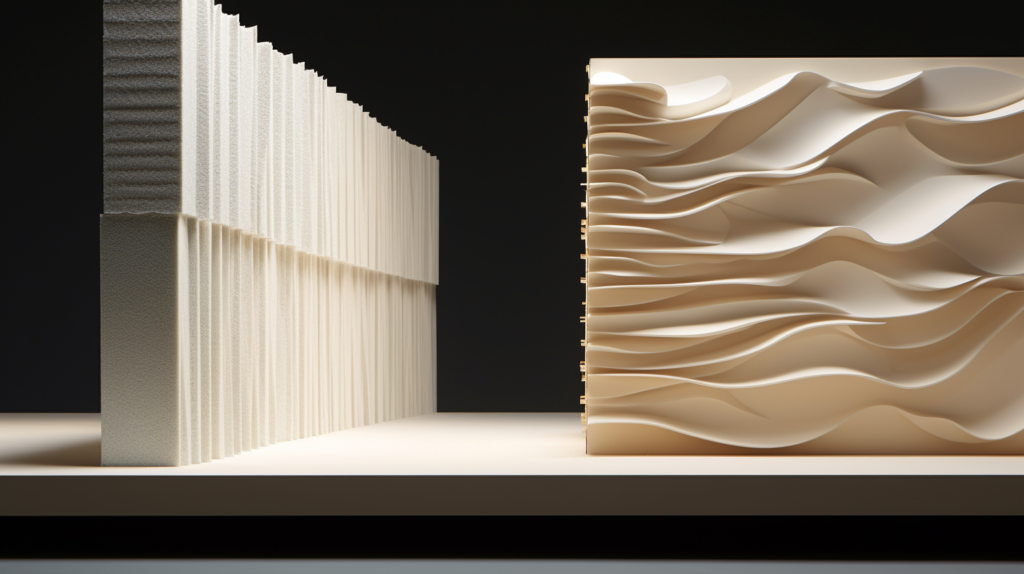Struggling with the incessant hum of city life, you might wonder if a simple brush stroke could bring tranquility.
Soundproof paint promises to muffle the noise, but does it really silence the sounds or is it just wishful thinking?
In this article, we’ll cut through the noise about soundproof paint, examining its effectiveness against the science of sound transmission.
Let’s dive in to uncover whether this innovative solution can actually bring the quiet or if it’s just a subtle hush in the bustling world of soundproofing solutions.
What Is Soundproof Paint?

The allure of a peaceful and quiet space is something that many of us yearn for, especially in the hustle and bustle of modern urban life. As cities grow denser, noise pollution has become a pervasive issue, driving the demand for effective soundproofing solutions.
Among the myriad of options available, soundproof paint presents itself as a promising contender.
This specialized coating is not just another product on the shelf; it represents a novel approach to combating noise—through the very walls and ceilings that define our living and working spaces.
At its core, soundproof paint is a concoction of traditional paint infused with a selection of noise-dampening additives. The key players in this acoustic alchemy are ceramics, latex, and a variety of polymers, each selected for their ability to disrupt and absorb sound waves.
These materials are not randomly chosen; they are the result of extensive research into the ways in which different substances interact with sound.
The ceramic particles, for instance, are known to scatter sound waves, while latex can add a degree of elasticity to the painted surface, allowing it to absorb more sound energy.
The application of soundproof paint is a straightforward process, akin to that of applying regular paint.
It’s this ease of use that adds to its appeal, allowing homeowners and office managers alike to tackle the problem of noise without the need for complex and intrusive renovations. The paint is touted to be particularly adept at reducing the ambient noise levels within a room.
By absorbing sound vibrations, it is said to reduce echoes and soften the sounds that typically bounce off hard surfaces, such as the chatter of conversation or the clicking of heels on a floor.
Yet, soundproof paint is not without its limitations, and understanding its capabilities is crucial for setting realistic expectations. While it may contribute to a more muted acoustic environment, it is not a panacea for all noise-related woes.
The degree to which it can dampen sound, the types of noise it is most effective against, and how it compares to more established soundproofing methods are all questions that merit closer examination.
Does Soundproofing Paint Actually Work For Soundproofing?

No, soundproofing paint don’t soundproof.
To answer this, one must delve into the principles of sound transmission and the physical characteristics necessary to obstruct it effectively.
Sound travels in waves, much like ripples on a pond, and these waves can penetrate through various materials—albeit with varying degrees of success.
Different frequencies of sound will interact with materials differently, leading to some sounds being absorbed, reflected, or transmitted.
High-frequency sounds have shorter wavelengths, and materials like soundproof paint can disrupt these waves more readily. This is why users might perceive a reduction in the sharpness of certain noises, such as the ringing of phones or the clarity of human speech.
These sounds are more susceptible to the softening effects of the paint’s additives, which can absorb and convert some of the sound energy into a negligible amount of heat, reducing the noise that ultimately passes through the painted surface.
The stubbornness of lower-frequency noises, however, poses a significant challenge. These noises, with their longer wavelengths, are not so easily swayed by a mere coat of paint.
The deep roar of city traffic, the rhythmic thump of a neighbor’s stereo, and the low drone of industrial machinery are all culprits that require a more formidable barrier to contain.
Soundproof paint, with its minimal thickness and relatively low density, simply lacks the mass to effectively impede the transmission of these pervasive sounds.
For meaningful noise reduction, especially with lower frequencies, a material must have sufficient mass—a physical presence that can absorb and nullify the energy of sound waves.
Soundproof paint, despite its innovative formulation, cannot provide the necessary barrier to achieve this level of soundproofing.
It may serve as a supplementary measure in an overall soundproofing strategy, but it is not the standalone solution for those faced with serious noise intrusion.
Soundproofing Need Mass. Period.

In the science of soundproofing, mass is more than just a physical attribute; it is a fundamental requirement. The principle that mass blocks sound is a truth that resonates through the core of acoustical engineering.
The heavier and denser a material, the more sound energy it can absorb and the less noise will be transmitted through it. This is the reason behind the efficacy of walls made from concrete, brick, or multiple layers of drywall in quieting the noise from outside.
When evaluating soundproof paint in this context, one cannot ignore the fact that it significantly lacks the mass necessary for substantial soundproofing.
A typical paint layer is exceedingly thin, measuring mere millimeters in thickness, and even when enhanced with sound-absorbing additives, it cannot begin to approach the mass provided by conventional soundproofing materials.
The difference in weight and density is stark—a single layer of soundproof paint might add a negligible amount of mass to a surface, whereas a standard wall contributes several pounds per square foot, providing a robust barrier against noise.
The disparity between soundproof paint and more substantial materials is not merely a matter of degree; it is a fundamental difference in kind.
Where traditional soundproofing materials offer a solid blockade against the intrusion of sound, soundproof paint offers at best a light cushioning. It’s important to understand this distinction when considering soundproof paint as a potential solution for noise problems.
Those in need of serious sound reduction must look beyond the paint can and toward solutions that can truly tip the scales in their favor.
What Are The Alternatives To Soundproof Paint?

Recognizing the limitations of soundproof paint, those in pursuit of silence must consider alternative strategies that can provide the mass and density necessary to dampen sound effectively.
These alternatives encompass a broad range of solutions, from simple, do-it-yourself fixes to more sophisticated, professional installations.
Soundproofing foam, distinct from the more common acoustic foam, is a heavyweight contender in the realm of noise reduction.
Made from materials such as fiberglass wool and mineral wool, it is engineered to absorb sound vibrations, particularly those of lower frequencies.
This foam can be applied directly to surfaces or used to fill cavities in walls, creating a dense barrier that impedes the passage of sound.
Conclusion
The verdict is clear: when it comes to reducing noise, traditional soundproofing methods that rely on mass and density are indispensable.
Soundproof paint may offer an innovative concept and a modicum of noise reduction, but it falls short of providing the necessary barrier for effective soundproofing.
Consumers should temper their expectations and understand that while soundproof paint may serve as a component in a broader soundproofing strategy, it cannot replace the effectiveness of traditional soundproofing materials.
